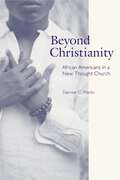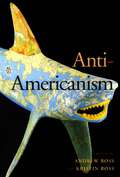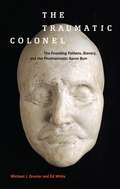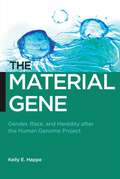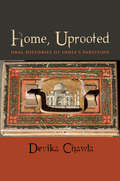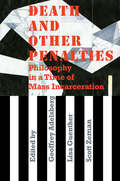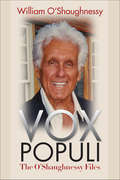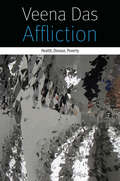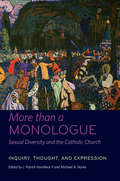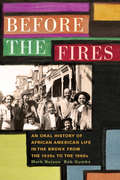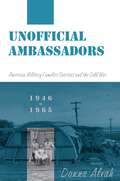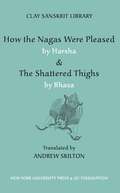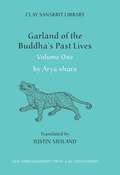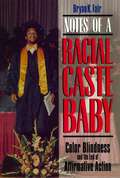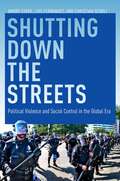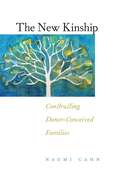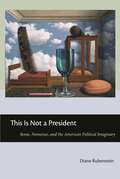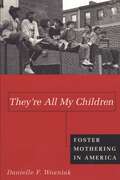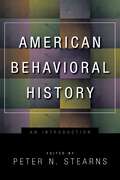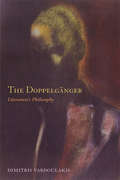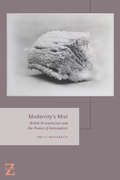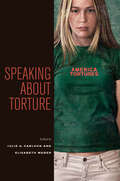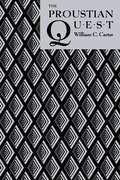- Table View
- List View
Beyond Christianity: African Americans in a New Thought Church (Religion, Race, and Ethnicity)
by Darnise C. MartinBeyond Christianity draws on rich ethnographic work in a Religious Science church in Oakland, California, to illuminate the ways a group of African Americans has adapted a religion typically thought of as white to fit their needs and circumstances.This predominantly African American congregation is an anomalous phenomenon for both Religious Science and African American religious studies. It stands at the intersection of New Thought doctrine, characterized by personal empowerment teachings,and a culturally familiar liturgical style reminiscent of Black Pentecostals and Black Spiritualists. This group challenges oversimplified concepts of the Black church experience and broadens the concept of Black religion outside the boundaries of Christianity—raising questions about what it means to be an African American congregation, and about the nature of blackness itself. Beyond Christianity adds a new dimension to the scholarship on Black religion.
Anti-Americanism
by Andrew RossEver since George Washington warned against "foreign entanglements" in his 1796 farewell speech, the United States has wrestled with how to act toward other countries. Consequently, the history of anti-Americanism is as long and varied as the history of the United States. In this multidisciplinary collection, seventeen leading thinkers provide substance and depth to the recent outburst of fast talk on the topic of anti-Americanism by analyzing its history and currency in five key global regions: the Middle East, Latin America, Europe, East Asia, and the United States. The commentary draws from social science as well as the humanities for an in-depth study of anti-American opinion and sentiment in different cultures. The questions raised by these essays force us to explore the new ways America must interact with the world after 9/11 and the war against Iraq. Contributors: Greg Grandin, Mary Louise Pratt, Ana Maria Dopico, George Yudice, Timothy Mitchell, Ella Shohat, Mary Nolan, Patrick Deer, Vangelis Calotychos, Harry Harootunian, Hyun Ok Park, Rebecca E. Karl, Moss Roberts, Linda Gordon, and John Kuo Wei Tchen.
The Traumatic Colonel: The Founding Fathers, Slavery, and the Phantasmatic Aaron Burr (America and the Long 19th Century #3)
by Michael J. Drexler Ed WhiteInAmerican political fantasy, the Founding Fathers loom large, at once historicaland mythical figures. In The Traumatic Colonel, Michael J. Drexler andEd White examine the Founders as imaginative fictions, characters in thespecifically literary sense, whose significance emerged from narrative elementsclustered around them. From the revolutionary era through the 1790s, the Founderstook shape as a significant cultural system for thinking about politics, race,and sexuality. Yet after 1800, amid the pressures of the Louisiana Purchase andthe Haitian Revolution, this system could no longer accommodate the deepanxieties about the United States as a slave nation.Drexlerand White assert that the most emblematic of the political tensions of the timeis the figure of Aaron Burr, whose rise and fall were detailed in theliterature of his time: his electoral tie with Thomas Jefferson in 1800,the accusations of seduction, the notorious duel with Alexander Hamilton, hismachinations as the schemer of a breakaway empire, and his spectacular treasontrial. The authors venture a psychoanalytically-informed exploration of post-revolutionaryAmerica to suggest that the figure of “Burr” was fundamentally a displacedfantasy for addressing the Haitian Revolution. Drexler and White expose how thehistorical and literary fictions of the nation’s founding served to repress thelarger issue of the slave system and uncover the Burr myth as the crux of thatrepression. Exploring early American novels, such as the works of CharlesBrockden Brown and Tabitha Gilman Tenney, as well as the pamphlets, polemics,tracts, and biographies of the early republican period, the authors speculatethat this flourishing of political writing illuminates the notorious gap inU.S. literary history between 1800 and 1820.
The Material Gene: Gender, Race, and Heredity after the Human Genome Project (Biopolitics #9)
by Kelly E. HappeWinner of the 2014 Diamond Anniversary Book AwardFinalist for the 2014 National Communications Association Critical and Cultural Studies Division Book of the Year AwardIn 2000, the National Human Genome Research Institute announced the completion of a “draft” of the human genome, the sequence information of nearly all 3 billion base pairs of DNA. Since then, interest in the hereditary basis of disease has increased considerably. In The Material Gene, Kelly E. Happe considers the broad implications of this development by treating “heredity” as both a scientific and political concept. Beginning with the argument that eugenics was an ideological project that recast the problems of industrialization as pathologies of gender, race, and class, the book traces the legacy of this ideology in contemporary practices of genomics. Delving into the discrete and often obscure epistemologies and discursive practices of genomic scientists, Happe maps the ways in which the hereditarian body, one that is also normatively gendered and racialized, is the new site whereby economic injustice, environmental pollution, racism, and sexism are implicitly reinterpreted as pathologies of genes and by extension, the bodies they inhabit. Comparing genomic approaches to medicine and public health with discourses of epidemiology, social movements, and humanistic theories of the body and society, The Material Gene reworks our common assumption of what might count as effective, just, and socially transformative notions of health and disease.
Home, Uprooted: Oral Histories of India's Partition
by Devika ChawlaThe Indian Independence Act of 1947 granted India freedom from British rule, signaling the formal end of the British Raj in the subcontinent. This freedom, though, came at a price: partition, the division of the country into India and Pakistan, and the communal riots that followed. These riots resulted in the deaths of an estimated 1 million Hindus and Muslims and the displacement of about 20 million persons on both sides of the border. This watershed socioeconomic–geopolitical moment cast an enduring shadow on India’s relationship with neighboring Pakistan. Presenting a perspective of the middle-class refugees who were forced from their homes, jobs, and lives with the withdrawal of British rule in India, Home, Uprooted delves into the lives of forty-five Partition refugees and their descendants to show how this epochal event continues to shape their lives.Exploring the oral histories of three generations of refugees from India’s Partition—ten Hindu and Sikh families in Delhi, Home, Uprooted melds oral histories with a fresh perspective on current literature to unravel the emergent conceptual nexus of home, travel, and identity in the stories of the participants. Author Devika Chawla argues that the ways in which her participants imagine, recollect, memorialize, or “abandon” home in their everyday narratives give us unique insights into how refugee identities are constituted. These stories reveal how migrations are enacted and what home—in its sense, absence, and presence—can mean for displaced populations.Written in an accessible and experimental style that blends biography, autobiography, essay, and performative writing, Home, Uprooted folds in field narratives with Chawla’s own family history, which was also shaped by the Partition event and her self-propelled migration to North America. In contemplating and living their stories of home, she attempts to show how her own ancestral legacies of Partition displacement bear relief.Home—how we experience it and what it says about the “selves” we come to occupy—is a crucial question of our contemporary moment. Home, Uprooted delivers a unique and poignant perspective on this timely question. This compilation of stories offers an iteration of how diasporic migrations might be enacted and what“home” means to displaced populations.
Death and Other Penalties: Philosophy in a Time of Mass Incarceration
by Lisa Guenther Scott ZemanMass incarceration is one of the most pressing ethical and political issues of our time. In this volume, philosophers join activists and those incarcerated on death row to grapple with contemporary U.S. punishment practices and draw out critiques around questions of power, identity, justice, and ethical responsibility.This work takes shape against a backdrop of disturbing trends: The United States incarcerates more of its own citizens than any other country in the world. A disproportionate number of these prisoners are people of color, and, today, a black man has a greater chance of going to prison than to college. The United States is the only Western democracy to retain the death penalty, even after decades of scholarship, statistics, and even legal decisions have depicted a deeply flawed system structured by racism and class oppression.Motivated by a conviction that mass incarceration and state execution are among the most important ethical and political problems of our time, the contributors to this volume come together from a diverse range of backgrounds to analyze, critique, and envision alternatives to the injustices of the U.S. prison system, with recourse to deconstruction, phenomenology, critical race theory, feminism, queer theory, and disability studies. They engage with the hyper-incarceration of people of color, the incomplete abolition of slavery, the exploitation of prisoners as workers and as “raw material” for the prison industrial complex, the intensive confinement of prisoners in supermax units, and the complexities of capital punishment in an age of abolition.The resulting collection contributes to a growing intellectual and political resistance to the apparent inevitability of incarceration and state execution as responses to crime and to social inequalities. It addresses both philosophers and activists who seek intellectual resources to contest the injustices of punishment in the United States.
Vox Populi: The O'Shaughnessy Files
by William O'ShaughnessyVox Populi is the long-awaited fourth collection of interviews, editorials, essays, observations and keen insight from legendary New York broadcaster William O’Shaughnessy. With this inspiring new anthology, Bill is back in a big way, offering compelling dialogue and opinion on timely issues and current events in politics, media, the arts and popular culture.A masterful interviewer, O’Shaughnessy goes one-on- one with Barbara Taylor Bradford, Steve Forbes,Joe Califano and a colorful band of townie characters from Westchester – the Golden Apple. Broadcastingfor five decades from what the Wall Street Journal hailed as “the quintessential community station inAmerica,” his thoughtful and muscular commentaries have been widely praised in all the important journalsin the land.A self-styled First Amendment “voluptuary,” O’Shaughnessy is a stellar defender of Free Speech,having devoted the good part of fifty years to fighting censorship and government intrusion from his influentialperch in the heart of the Eastern Establishment.He’s the one they roll out when the likes of Howard Stern, Bob Grant and Imus get in a jam. Colorful national figures and beguiling “townies” abound in Vox Populi which is also laden with exquisitely beautiful eulogies and tributes to his departed friends Tim Russert, Wellington Mara, Robert Merrill and Ossie Davis.And, as in every Bill O’Shaughnessy book, there is stunning and powerful wisdom and brilliant observationsfrom Governor Mario Cuomo whom he so admires.The great American historian David McCullough observed: “I always look forward to reading the historyof our times Bill O’Shaughnessy has written.” O’Shaughnessy is an authentic American voice.
Affliction: Health, Disease, Poverty (Forms of Living)
by Veena DasAffliction inaugurates a novel way of understanding the trajectories of health and disease in the context of poverty. Focusing on low-income neighborhoods in Delhi, it stitches together three different sets of issues.First, it examines the different trajectories of illness: What are the circumstances under which illness is absorbed within the normal and when does it exceed the normal—putting resources, relationships, and even one’s world into jeopardy?A second set of issues involves how different healers understand their own practices. The astonishing range of practitioners found in the local markets in the poor neighborhoods of Delhi shows how the magical and the technical are knotted together in the therapeutic experience of healers and patients. The book asks: What is expert knowledge? What is it that the practitioner knows and what does the patient know? How are these different forms of knowledge brought together in the clinical encounter, broadly defined? How does this event of everyday life bear the traces of larger policies at the national and global levels?Finally, the book interrogates the models of disease prevalence and global programming that emphasize surveillance over care and deflect attention away from the specificities of local worlds. Yet the analysis offered retains an openness to different ways of conceptualizing “what is happening” and stimulates a conversation between different disciplinary orientations to health, disease, and poverty.Most studies of health and disease focus on the encounter between patient and practitioner within the space of the clinic. This book instead privileges the networks of relations, institutions, and knowledge over which the experience of illness is dispersed. Instead of thinking of illness as an event set apart from everyday life, it shows the texture of everyday life, the political economy of neighborhoods, as well as the dark side of care. It helps us see how illness is bound by the contexts in which it occurs, while also showing how illness transcends these contexts to say something about the nature of everyday life and the making of subjects.
More than a Monologue: Inquiry, Thought, and Expression (Catholic Practice in North America)
by J. Patrick Hornbeck II and Michael A. NorkoThis volume, like its companion, Voices of Our Times, collects essays drawn from a series of public conferences held in autumn 2011 entitled “More than a Monologue.” The series was the fruit of collaboration among four institutions of higher learning: two Catholic universities and two nondenominational divinity schools. The conferences aimed to raise awareness of and advance informed, compassionate, and dialogical conversation about issues of sexual diversity within the Catholic community, as well as in the broader civic worlds that the Catholic Church and Catholic people inhabit. They generated fresh, rich sets of scholarly and reflective contributions that promise to take forward the delicate work of theological-ethical and ecclesial development. Along with Voices of Our Times, this volume captures insights from the conferences and aims to foster what the Jesuit Superior General, Fr. Adolfo Nicolas, has called the “depth of thought and imagination” needed to engage effectively with complex realities, especially in areas marked by brokenness, pain, and the need for healing. The volumes will serve as vital resources for understanding and addressing better the too often fraught relations between LGBTQ (lesbian, gay, bisexual, transgender, and queer) persons, their loved ones and allies, and the Catholic community.Inquiry, Thought, and Expression explores dimensions of ministry, ethics, theology, and law related to a range of LGBTQ concerns, including Catholic teaching, its reception among the faithful, and the Roman Catholic Church’s significant role in world societies. Within the volume, a series of essays on ministry explores variousperspectives not frequently heard within the church. Marriage equality and the treatment of LGBTQ individuals by and within the Roman Catholic Church are considered from the vantage points of law, ethics, and theology. Themes of language and discourse are explored in analyses of the place of sexual diversity in church history, thought, and authority.The two volumes of More than a Monologue, like the conferences from which they developed, actively move beyond the monologic voice of the institutional church on the subject of LGBTQ issues, inviting and promoting open conversations about sexual diversity and the church. Those who read Inquiry, Thought, and Expression will encounter not just an excellent resource for research and teaching in the area of moral theology but also an opportunity to actively listen to and engage in groundbreaking discussions about faith and sexuality within and outside the Catholic Church.
Before the Fires: An Oral History of African American Life in the Bronx from the 1930s to the 1960s
by Mark D. Naison Bob GumbsPeople associate the South Bronx with gangs, violence, drugs, crime, burned-out buildings, and poverty. This is the message that has been driven into their heads over the years by the media. As Howard Cosell famously said during the 1977 World’s Series at Yankee Stadium, “There it is, ladies and gentlemen, the Bronx is burning.” In this new book, Naison and Gumbs provide a completely different picture of the South Bronx through interviews with residents who lived here from the 1930s to the 1960s.In the early 1930s, word began to spread among economically secure black families in Harlem that there were spacious apartments for rent in the Morrisania section of the Bronx. Landlords in that community, desperate to fill their rent rolls and avoid foreclosure, began putting up signs in their windows and in advertisements in New York’s black newspapers that said, “We rent to select colored families,” by which they meant families with a securely employed wage earner and light complexions. Black families who fit these criteria began renting apartments by the score. Thus began a period of about twenty years during which the Bronx served as a borough of hope and unlimited possibilities for upwardly mobile black families.Chronicling a time when African Americans were suspended between the best and worst possibilities of New York City, Before the Fires tells the personal stories of seventeen men and women who lived in the South Bronx before the social and economic decline of the area that began in the late 1960s. Located on a hill hovering over one of the borough’s largest industrial districts, Morrisania offered black migrants from Harlem, the South, and the Caribbean an opportunity to raise children in a neighborhood that had better schools, strong churches, better shopping, less crime, and clean air. This culturally rich neighborhood also boasted some of the most vibrant music venues in all of New York City, giving rise to such music titans as Lou Donaldson, Valerie Capers, Herbie Hancock, Eddie Palmieri, Donald Byrd, Elmo Hope, Henry “Red” Allen, Bobby Sanabria, Valerie Simpson, Maxine Sullivan, the Chantels, the Chords, and Jimmy Owens.Alternately analytical and poetic, but all rich in detail, these inspiring interviews describe growing up and living in vibrant black and multiracial Bronx communities whose contours have rarely graced the pages of histories of the Bronx or black New York City. Capturing the excitement of growing up in this stimulating and culturally diverse environment, Before the Fires is filled with the optimism of the period and the heartache of what was shattered in the urban crisis and the burning of the Bronx.
Narratives of Catastrophe: Boris Diop, ben Jelloun, Khatibi
by Nasrin QaderNarratives of Catastrophe tells the story of the relationship between catastrophe, in the senses of "down turn" and "break," and narration as "recounting" in the senses suggested by the French term récit in selected texts by three leading writers from Africa. Qader's book begins by exploring the political implications of narrating catastrophic historical events. Through careful readings of singular literary texts on the genocide in Rwanda and on Tazmamart, a secret prison in Morocco under the reign of Hassan II, Qader shows how historical catastrophes enter language and how this language is marked by the catastrophe it recounts. Not satisfied with the extra-literary characterizations of catastrophe in terms of numbers, laws, and naming, she investigates the catastrophic in catastrophe, arguing that catastrophe is always an effect of language andthought,. The récit becomes a privileged site because the difficulties of thinking and speaking about catastrophe unfold through the very movements of storytelling.This book intervenes in important ways in the current scholarship in the field of African literatures. It shows the contributions of African literatures in elucidating theoretical problems for literary studies in general, such as storytelling's relationship to temporality, subjectivity, and thought. Moreover, it addresses the issue of storytelling, which is of central concern in the context of African literatures but still remains limited mostly to the distinction between the oral and the written. The notion of récit breaks with this duality by foregrounding the inaugural temporality of telling and of writing as repetition.The final chapters examine catastrophic turns within the philosophical traditions of the West and in Islamic thought, highlighting their interconnections and differences.
Unofficial Ambassadors: American Military Families Overseas and the Cold War, 1946-1965
by Donna AlvahAs thousands of wives and children joined American servicemen stationed at overseas bases in the years following World War II, the military family represented a friendlier, more humane side of the United States' campaign for dominance in the Cold War. Wives in particular were encouraged to use their feminine influence to forge ties with residents of occupied and host nations. In this untold story of Cold War diplomacy, Donna Alvah describes how these “unofficial ambassadors” spread the United States’ perception of itself and its image of world order in the communities where husbands and fathers were stationed, cultivating relationships with both local people and other military families in private homes, churches, schools, women's clubs, shops, and other places.Unofficial Ambassadors reminds us that, in addition to soldiers and world leaders, ordinary people make vital contributions to a nation's military engagements. Alvah broadens the scope of the history of the Cold War by analyzing how ideas about gender, family, race, and culture shaped the U.S. military presence abroad.
How the Nagas Were Pleased by Harsha & The Shattered Thighs by Bhasa (Clay Sanskrit Library #48)
by Harṣa and Bhāa, Translated by Andrew SkiltonTwo tragic plays that break the rules: both show the hero dying on stage, a scenario forbidden in Sanskrit dramaturgy. King Harsha's play, composed in the seventh century, re-examines the Buddhist tale of a magician prince who makes the ultimate sacrifice to save a hostage snake (naga). The Shattered Thighs, attributed to Bhasa, the illustrious predecessor to ancient Kali·dasa, transforms a crucial episode of the Maha·bhárata war. As he dies from a foul blow to the legs delivered in his duel with Bhima, Duryódhana's character is inverted, depicted as a noble and gracious exemplar amidst the wreckage of the fearsome battle scene.
Garland of the Buddha’s Past Lives (Clay Sanskrit Library #8)
by AryashuraThe Garland of Past Lives is a collection of thirty four stories depicting the miraculous deeds performed by the Buddha in his previous rebirths. Composed in the fourth century C.E. by the Buddhist monk Aryashura, the text’s accomplished artistry led Indian aesthetic theorists to praise its elegant mixture of verse and prose. The twenty stories in this first volume deal primarily with the virtues of giving and morality. Ascetics sacrifice their lives for hungry tigers, kings open their veins for demons to drink their blood, helmsmen steer their crew through perilous seas, and quail chicks quench forest fires by proclaiming words of truth. The experience is intended to arouse astonishment in the audience, inspiring devotion, through the future Buddha’s transcendence of conventional norms in his quest to acquire enlightenment and save the world from suffering. The importance of such stories of past lives in traditional Buddhist culture, throughout Asia and up to today, cannot be overestimated.
Notes of a Racial Caste Baby: Color Blindness and the End of Affirmative Action (Critical America #25)
by Bryan K. FairThe Constitution of the United States, writes Bryan Fair, was a series of compromises between white male propertyholders: Southern planters and Northern merchants. At the heart of their deals was a clear race-conscious intent to place the interests of whites above those of blacks. In this provocative and important book, Fair, the eighth of ten children born to a single mother on public assistance in an Ohio ghetto, combines two histories--America's and his own- -to offer a compelling defense of affirmative action. How can it be, Fair asks, that, after hundreds of years of racial apartheid during which whites were granted 100% quotas to almost all professions, we have now convinced ourselves that, after a few decades of remedial affirmative action, the playing field is now level? Centuries of racial caste, he argues, cannot be swept aside in a few short years. Fair ambitiously surveys the most common arguments for and against affirmative action. He argues that we must distinguish between America in the pre-Civil Rights Movement era--when the law of the land was explicitly anti-black--and today's affirmative action policies--which are decidedly not anti- white. He concludes that the only just and effective way in which to account for America's racial past and to negotiate current racial quagmires is to embrace a remedial affirmative action that relies neither on quotas nor fiery rhetoric, but one which takes race into account alongside other pertinent factors. Championing the model of diversity on which the United States was purportedly founded, Fair serves up a personal and persuasive account of why race-conscious policies are the most effective way to end de facto segregation and eliminate racial caste. Table of Contents A Note to the Reader Acknowledgments Preface: Telling Stories Recasting Remedies as Diseases Color-Blind Justice The Design of This Book Pt. 1. A Personal Narrative Not White Enough Dee Black Columbus Racial Poverty Man-Child Colored Matters Coded Schools Busing Going Home Equal Opportunity The Character of Color Diversity as One Factor The Deception of Color Blindness Pt. 2. White Privilege and Black Despair: The Origins of Racial Caste in America The Declaration of Inferiority Marginal Americans Inventing American Slavery The Road to Constitutional Caste Losing Second-Class Citizenship Reconstruction and Sacrifice Separate and Unequal The Color Line Critiquing Color Blindness Pt. 3. The Constitutionality of Remedial Affirmative Action The Origins of Remedial Affirmative Action The Court of Last Resort The Invention of Reverse Discrimination The Politics of Affirmative Action: Myth or Reality? Racial Realism Eliminating Caste Afterword Notes Index
Shutting Down the Streets: Political Violence and Social Control in the Global Era
by Luis A. Fernandez Amory Starr Christian SchollRecently, a wall was built in eastern Germany. Made of steel and cement blocks, topped with razor barbed wire, and reinforced with video monitors and movement sensors, this wall was not put up to protect a prison or a military base, but rather to guard a three-day meeting of the finance ministers of the Group of Eight (G8). The wall manifested a level of security that is increasingly commonplace at meetings regarding the global economy. The authors of Shutting Down the Streets have directly observed and participated in more than 20 mass actions against global in North America and Europe, beginning with the watershed 1999 WTO meetings in Seattle and including the 2007 G8 protests in Heiligendamm. Shutting Down the Streets is the first book to conceptualize the social control of dissent in the era of alterglobalization. Based on direct observation of more than 20 global summits, the book demonstrates that social control is not only global, but also preemptive, and that it relegates dissent to the realm of criminality. The charge is insurrection, but the accused have no weapons. The authors document in detail how social control forecloses the spaces through which social movements nurture the development of dissent and effect disruptive challenges.
The New Kinship: Constructing Donor-Conceived Families (Families, Law, and Society #14)
by Naomi R. CahnNo federal law in the United States requires that egg or sperm donors or recipients exchange any information with the offspring that result from the donation. Donors typically enter into contracts with fertility clinics or sperm banks which promise them anonymity. The parents may know thedonor’s hair color, height, IQ, college, and profession; they may even have heard the donor’s voice. But they don’t know the donor’s name, medical history, or other information that might play a key role in a child’s development. And, until recently, donor-conceived offspring typically didn’t know that one of their biological parents was a donor. But the secrecy surrounding the use of donor eggs and sperm is changing. And as it does, increasing numbers of parents and donor-conceived offspring are searching for others who share the same biological heritage. When donors, recipients, and “donor kids” find each other, they create new forms of families that exist outside of the law. The New Kinship details how families are made and how bonds are created between families in the brave new world of reproductive technology. Naomi Cahn, a nationally-recognized expert on reproductive technology and the law, shows how these new kinship bonds dramatically exemplify the ongoing cultural change in how we think about family. The issues Cahn explores in this book will resonate with anyone—and everyone—who has struggled with questions of how to define themselves in connection with their own biological, legal, or social families.
This Is Not a President: Sense, Nonsense, and the American Political Imaginary
by Diane RubensteinRead The Chronicle of Higher Ed Author InterviewIn This Is Not a President, Diane Rubenstein looks at the postmodern presidency — from Reagan and George H. W. Bush, through the current administration, and including Hillary. Focusing on those seemingly inexplicable gaps or blind spots in recent American presidential politics, Rubenstein interrogates symptomatic moments in political rhetoric, popular culture, and presidential behavior to elucidate profound and disturbing changes in the American presidency and the way it embodies a national imaginary.In a series of essays written in real time over the past four presidential administrations, Rubenstein traces the vernacular use of the American presidency (as currency, as grist for popular biography, as fictional TV material) to explore the ways in which the American presidency functions as a “transitional object” that allows the American citizen to meet or discover the president while going about her everyday life. The book argues that it is French theory — primarily Lacanian psychoanalysis and the radical semiotic theories of Jean Baudrillard — that best accounts for American political life today. Through episodes as diverse as Iran Contra, George H. W. Bush vomiting in Japan, the 1992 Republican convention, the failed nomination of Lani Guinier, and the Iraq War, This Is Not a President brilliantly situates our collective investment in American political culture.
They're All My Children: Foster Mothering in America
by Danielle WozniakThe first book on foster care written from foster mothers' perspectives, They're All My Children voices the often painful experiences of contemporary U.S. foster mothers as they struggle to mother and care-work in the face of exploitative social relations with the state. Drawing on extensive ethnographic research, Wozniak, herself a former foster mother and an anthropologist, presents and analyzes women's personal stories about fostering to reflect on the larger socio-cultural context of American family lifenamely, how we think about kinship, identity, and work. Foster mothers construct enduring kinship relationships with children, and often with the children's biological families. These relationships enhance children's chances to growth and thrive and in turn extend women's kin relationships into often distant and disparate communities. Wozniak also highlights the economic side of fostering to show how foster mothers are both mothers and workers; foster children are both providers and provided for, adored sentimental children and economic figures. Through in-depth interviews and participant observation, Wozniak argues that we have not gone far enough in understanding the experiences of these women whose life work lies outside the usual boundaries. Nor have child welfare gone far enough in revising the theories upon which child welfare policies are based. Foster mothers and their experiences challenge the patriarchal, nuclear family ideals upon which foster care programs are based, a challenge that They're All My Children takes forward.
Handsome Nanda (Clay Sanskrit Library #39)
by Ashva·ghoshaNanda has it all: youth, money, good looks and a kittenish wife who fulfills his sexual and emotional needs. He also has the Buddha, a dispassionate man of immense insight and self-containment, for an older brother. When Nanda is made a reluctant recruit to the Buddha's order of monks, he is forced to confront his all-too-human enslavement to his erotic and romantic desires. Dating from the second century CE, Ashva·ghosha’s Handsome Nanda portrays its hero’s spiritual makeover with compassion, psychological profundity, and great poetic skill.Co-published by New York University Press and the JJC FoundationFor more on this title and other titles in the Clay Sanskrit series, please visit http://www.claysanskritlibrary.org
American Behavioral History: An Introduction
by Peter N. StearnsFrom his founding of The Journal of Social History to his groundbreaking work on the history of emotions, weight, and parenting, Peter N. Stearns has pushed the boundaries of social history to new levels, presenting new insights into how people have lived and thought through the ages. Having established the history of emotions as a major subfield of social history, Stearns and his collaborators are poised to do the same thing with the study of human behavior. This is their manifesto. American Behavioral History deals with specific uses of historical data and analysis to illuminate American behavior patterns, ranging from car buying rituals to sexuality, and from funeral practices to contemporary grandparenting. The anthology illustrates the advantages and parameters of analyzing the ways in which people behave, and adds significantly to our social understanding while developing innovative methods for historical teaching and research. At its core, the collection demonstrates how the study of the past can be directly used to understand current behaviors in the United States. Throughout, contributors discuss not only specific behavioral patterns but, importantly, how to consider and interpret them as vital historical sources. Contributors include Gary Cross, Paula Fass, Linda Rosenzweig, Susan Matt, Steven M. Gelber, Peter N. Stearns, Suzanne Smith, Mark M. Smith, Kevin White.
The Doppelganger: Literature's Philosophy
by Dimitris VardoulakisThe Doppelgänger or Double presents literature as the "double" of philosophy. There are historical reasons for this. The genesis of the Doppelgänger is literature's response to the philosophical focus on subjectivity. The Doppelgänger was coined by the German author Jean Paul in 1796 as a critique of Idealism's assertion of subjective autonomy, individuality and human agency. This critique prefigures post-War extrapolations of the subject as decentred. From this perspective, the Doppelgänger has a "family resemblance" to current conceptualizations of subjectivity. It becomes the emblematic subject of modernity. This is the first significant study on the Doppelgänger's influence on philosophical thought. The Doppelgänger emerges as a hidden and unexplored element both in conceptions of subjectivity and in philosophy's relation to literature. Vardoulakis demonstrates this by employing the Doppelgänger to read literature philosophically and to read philosophy as literature. The Doppelgänger then appears instrumental in the self-conception of both literature and philosophy.
Modernity's Mist: British Romanticism and the Poetics of Anticipation (Lit Z)
by Emily RohrbachModernity’s Mist explores an understudied aspect of Romanticism: its future-oriented poetics. Whereas Romanticism is well known for its relation to the past, Emily Rohrbach situates Romantic epistemological uncertainties in relation to historiographical debates that opened up a radically unpredictable and fast- approaching future. As the rise of periodization made the project of defining the “spirit of the age” increasingly urgent, the changing sense of futurity rendered the historical dimensions of the present deeply elusive. While historicist critics often are interested in what Romantic writers and their readers would have known, Rohrbach draws attention to moments when these writers felt they could not know the historical dimensions of their own age. Illuminating the poetic strategies Keats, Austen, Byron, and Hazlitt used to convey that sense of mystery, Rohrbach describes a poetic grammar of future anteriority—of uncertainty concerning what will have been. Romantic writers, she shows, do not simply reflect the history of their time; their works make imaginable a new way of thinking the historical present when faced with the temporalities of modernity.
Speaking about Torture
by Elisabeth Weber Julie A. CarlsonThis collection of essays is the first book to take up the urgent issue of torture from the array of approaches offered by the arts and humanities. In the post-9/11 era, where we are once again compelled to entertain debates about the legality of torture, this volume speaks about the practice in an effort to challenge the surprisingly widespread acceptance of state-sanctioned torture among Americans, including academics and the media–entertainment complex. Speaking about Torture also claims that the concepts and techniques practiced in the humanities have a special contribution to make to this debate, going beyond what is usually deemed a matter of policy for experts in government and the social sciences. It contends that the way one speaks about torture—including that one speaks about it—is key to comprehending, legislating, and eradicating torture. That is, we cannot discuss torture without taking into account the assaults on truth, memory, subjectivity, and language that the humanities theorize and that the experience of torture perpetuates. Such accounts are crucial to framing the silencing and demonizing that accompany the practice and representation of torture.Written by scholars in literary analysis, philosophy, history, film and media studies, musicology, and art history working in the United States, Europe, and the Middle East, the essays in this volume speak from a conviction that torture does not work to elicit truth, secure justice, or maintain security. They engage in various ways with the limits that torture imposes on language, on subjects and community, and on governmental officials, while also confronting the complicity of artists and humanists in torture through their silence, forms of silencing, and classic means of representation. Acknowledging this history is central to the volume’s advocacy of speaking about torture through the forms of witness offered and summoned by the humanities.
The Proustian Quest
by William C. Carter"An ambitious study, the fruit of sustained work over many years. Professor Carter's book deploys a stunning knowledge of Proust and places Carter among the first line of Proust scholars in the country."-Roger Shattuck,Boston University The Proustian Quest is the first full-length study that explores the influence of social change on Proust's vision. In Remembrance of Things Past, Proust describes how the machines of transportation and communication transformed fashion, social mores, time-space perception, and the understanding of the laws of nature. Concentrating on the motif of speed, Carter establishes the centrality of the modern world to the novel's main themes and produces a far- reaching synthesis that demonstrates the work's profound structural unity.
